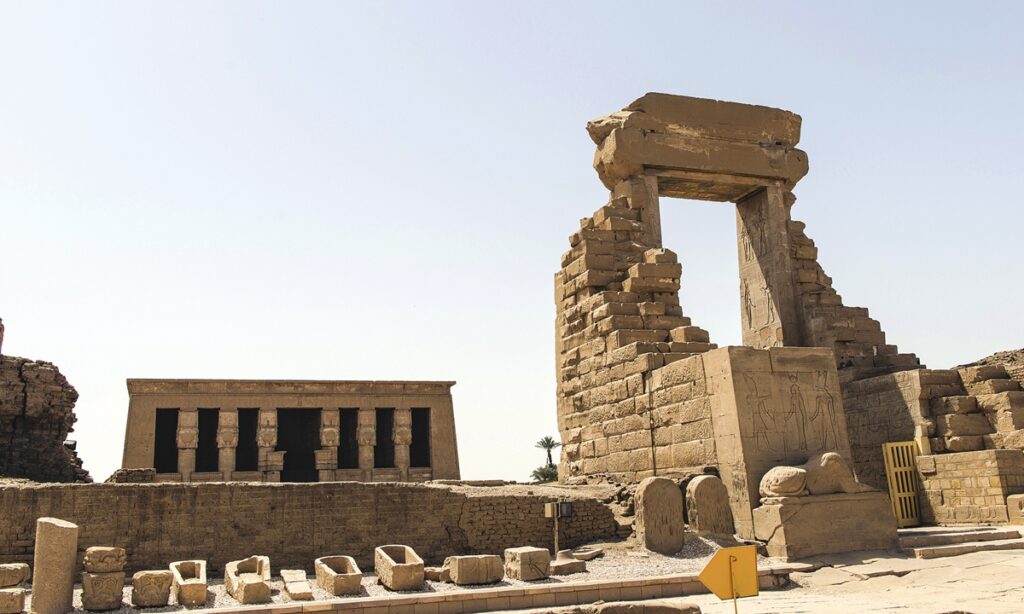Further excavation and documentation work has been completed in the second phase of the Egyptian-Chinese archeological mission at Montu Temple in the Karnak Temple Complex of Egypt’s monument-rich city of Luxor.
“This phase, we worked on two areas: the Osirian Chapels [Area 1] and the junction between Montu Temple and Maat Temple [Area 2],” said Jia Xiaobing, head of the Chinese archaeological mission, adding that the second phase of the mission started in early December 2019 and was concluded in late March.
The first phase of the joint mission started in late November 2018 and similarly continued for about four months.
During the 2019-20 phase, the joint mission discovered a paved courtyard with four granite column bases in the area between the Chapel of Amenardis I, the second of three chapels in the temple and its sandstone gate, according to the senior Chinese archeologist.
The mission also did more studies and excavation at Area 2, which includes the western joint section between the temples of Montu and Maat, with the aim of learning more about the relation between the two monuments.
“After the construction of the Maat Temple, a three-meter-wide mud-brick wall built directly against the foundation of the second pylon was discovered in the southeastern part of our excavation,” Jia pointed out, adding that an L-shaped mud-brick construction was also uncovered in the southwestern sector.
To improve the mission’s knowledge of the site, an epigraphic survey was carried out during the second phase to check and register all the blocks that were found and left by previous archaeological missions at the site over the decades.
Jia noted that the blocks were arranged into different groups during previous missions in the 1970s and that the joint Egyptian-Chinese mission will organize them step by step in the coming phases.
“During this phase, over 400 blocks have been registered… Half of them have been photographed. This task will be completed in the next phase and each group will be documented through photogrammetry,” he explained.
Jia clarified that many treatment processes have been used at the second and the third chapels of Montu Temple, saying that an eight-person restoration team from the Restoration Department of Karnak Temple took part in the fieldwork in January.
“The mission also took advantage of the environment of the site, recycling the rubble resulting from excavation work and re-using it to make mud bricks that can be used in the work of rebuilding mud buildings, such as fences, walls and mud-brick foundations, in addition to using them to cover and protect the excavation sites after the end of the phase,” Jia told the Xinhua News Agency.
The first Egyptian-Chinese archeological mission in Egypt is the outcome of a protocol of cooperation signed between the Egyptian Ministry of Antiquities and the Chinese Academy of Social Sciences.
The Temple of Dandara in Luxor, Egypt Photo: VCG




